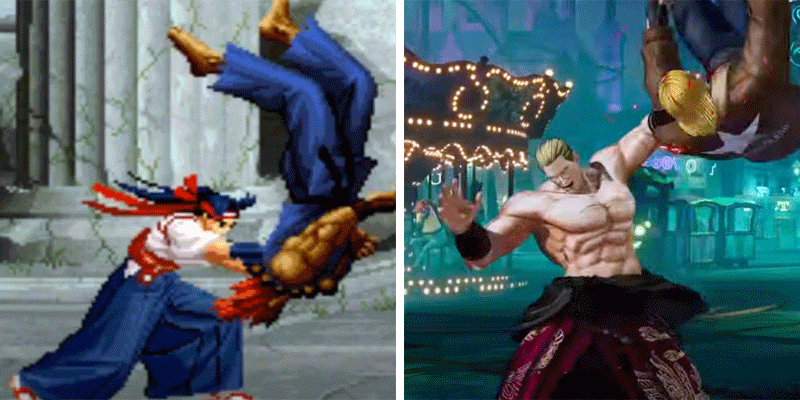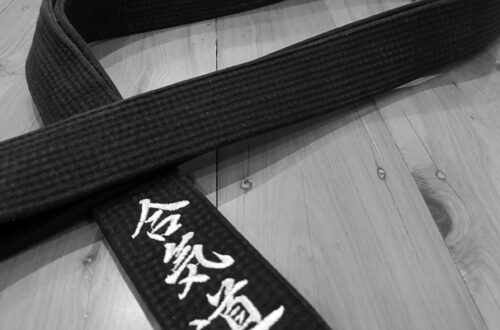
Unleashing the Power of Aiki: Arcade Fighters in Motion
Arcade fighting games have long served as arenas where diverse martial arts styles collide. Among the plethora of techniques showcased in these games, Aikido and similar martial arts have secured their place in the roster of iconic characters. This article delves into the portrayal of Aikido and akin disciplines in arcade fighting games, examining their impact on character design and gameplay dynamics.
Aikido, renowned for its focus on redirecting an opponent’s energy with harmonious movement, has intrigued game developers aiming to craft distinctive and authentic characters. The core tenets of this martial art, such as blending, circular motion, and joint locks, align seamlessly with the dynamic and acrobatic nature of arcade fighting games. Characters proficient in these techniques often exhibit smooth and fluid movements, utilizing their adversaries’ strength against them while executing throws and counters with finesse.
Typically depicted as composed and disciplined combatants who prioritize strategy and finesse over sheer force, Aikido-inspired characters embody a serene yet formidable presence. Their animations mirror the flowing essence of Aikido, emphasizing agility and grace. Excelling in countering and redirecting attacks, these characters adeptly seize opportunities to turn their opponents’ aggression against them.
In terms of gameplay mechanics, Aikido-inspired characters frequently possess defensive abilities enabling them to evade and neutralize incoming assaults. Their defensive prowess necessitates a patient approach, requiring players to wait for opportune moments to respond with well-timed counter techniques, such as counter strikes, joint locks, throws, or grappling maneuvers. Many players find mastering these characters more challenging compared to those employing direct offensive martial arts styles like Karate 空手道 or Taekwondo 跆拳道. Consequently, Aikido-inspired characters are relatively scarce in arcade games.

Tamaki from Dead or Alive and Aoi Umenokoji from Virtua Fighter
One notable example is Tamaki from Dead or Alive, who is officially depicted as a fashion designer and also an Aikidoka. An elegant character, she can execute a whole series of Aikido techniques in the game, including ikkyo 一教, irimi-nage 入身投, shiho-nage 四方投, koshi-nage 腰投, kaiten-nage 回転投, and sutemi-waza 捨身技. To enhance playability, game developers often supplement these characters with light striking techniques, emphasizing speed over raw power. Additionally, these characters are often portrayed as female and might also have backgrounds in other martial arts, allowing for a versatile combat style that combines striking with Aikido techniques.
Beyond Aikido, there exists another category of characters depicted as practitioners of Aiki-jujutsu or kobujutsu 古武術 type of martial arts. With their historical martial arts backdrop, these characters offer game developers greater creative freedom to introduce more offensive techniques. Often depicted as originally designed for battlefield combat, these characters boast unique and sometimes secretive techniques that can catch opponents off guard. But it is not hard to see the similarity between Aikido and some of their throwing techniques.

Asuka Kazama from Tekken executing koshi-nage, irimi-nage and sankyo
Asuka Kazama 風間飛鳥 from Tekken not only can use shiho-nage and irimi-nage, but her techniques hakusan 白山, katatoshiki 型貫き and juji-se-otoshi 十字背落とし are highly resemble Aikido’s ikkyo, sankyo, and koshi-nage. Similarly, Aoi Umenokoji 梅小路 葵 from Virtua Fighter can use ikkyo, sankyo, shiho-nage, irimi-nage, sutemi-nage, aiki-otoshi 合氣落とし, and kote-gaeshi 小手返 alike techniques but with more exquisite names such as 水鏡 “Water Mirror”, 五月雨 “May Rain” and 花散里 “Village of Falling Flowers”.
Apart from Asuka and Aoi, there are also characters like Kasumi Todoh 藤堂 香澄 from Art of Fighting 龍虎の拳 and one of the very few male characters, Geese Howard from Fatal Fury 餓狼伝説 and The King of Fighters. They are depicted to use a blend of power striking techniques and also Aiki techniques. No doubt their creations were inspired by Aiki-jujutsu type of martial arts, but since they appear in some of the older 2D arcade game titles, it is difficult to see how their fighting techniques compare with any Aikido-like moves.

Kasumi Todoh from Art of Fighting and Geese Howard from Fatal Fury
Due to technological limitations in the past, faithfully recreating these Aikido or Aiki-jujutsu techniques in the game without sacrificing playability proved challenging. While some defensive techniques were included, the majority of their moves remained offensive. However, as technology advanced, not only did the graphics of games become incredibly beautiful and detailed, but the movement also became smoother, and some of the exquisite Aikido techniques became fully playable. Tamaki in Dead or Alive serves as an excellent example of this progression. Nevertheless, in the realm of arcade gaming, the ultimate objective remains victory, and while defensive and counter techniques enhance playability, offensive strategies remain paramount. Undoubtedly, many gamers eagerly anticipate the inclusion of more of these characters in upcoming titles.
Suggested reading: The Rare Beauty of Aikido in Japanese Manga
Author’s Note: We appreciate your readership! This article serves as a preliminary introduction to the subject matter. While we aim for accuracy, we cannot guarantee the content’s precision and it may contain elements of speculation. We strongly advise you to pursue additional research if this topic piques your interest. Begin your AikidoDiscovery adventure! 🙂




